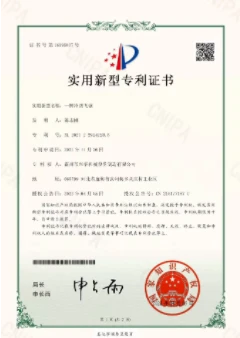Innovative Techniques and Applications for Roll Forming in Modern Manufacturing
The Evolution and Applications of Roll Forming Products
Roll forming is a highly efficient manufacturing process that has gained prominence in various industries due to its ability to produce shapes with great precision and consistency. This technique involves the continuous bending of a long strip of metal, typically sheet or coiled steel, into the desired profile by passing it through a series of rollers. As industries evolve, so does the demand for roll forming products, which now play a crucial role in construction, automotive, and numerous other sectors.
Understanding the Roll Forming Process
The roll forming process begins with a coil of raw material, which is fed into a series of rollers that gradually shape it into the desired configuration. The process can create complex cross-sectional shapes that remain uniform in thickness. This is achieved through a carefully designed tooling setup, which is customized to produce specific profiles. The process is continuous, meaning that it can produce long lengths of material that can be cut to size at the end of the line.
One of the key advantages of roll forming is the minimal waste it generates. Since the material is continually fed through the rollers, the only waste produced typically comes from the trimming process at the end. This efficiency not only helps in cost reduction but also makes roll forming an environmentally friendly manufacturing choice.
Wide Range of Applications
Roll forming products are extensively used in various applications due to their durability and adaptability. In the construction industry, for instance, roll-formed components such as metal studs, tracks, and roofing panels are popular for their lightweight yet sturdy nature. These products contribute to the structural integrity of buildings while allowing for easier and faster construction processes.
roll forming products

In the automotive sector, roll forming is vital for producing components like door frames, chassis parts, and beams, which require high strength-to-weight ratios. The automotive industry benefits significantly from the precision and repeatability of roll-formed products, which help in meeting both safety standards and performance requirements.
Additionally, roll forming is ubiquitous in creating parts for appliances, HVAC systems, and even furniture. Items such as brackets, supports, and decorative trim can all be efficiently produced through this method. The versatility of roll forming means that manufacturers can easily adapt the process to accommodate custom designs and specifications, which is increasingly important in today’s market characterized by rapid change and innovation.
Innovations and Advancements
Recent advancements in technology have further enhanced the roll forming process. The integration of computer-aided design (CAD) allows for more complex and intricate profiles to be designed, while computer numerical control (CNC) technology ensures high precision during production. These technologies enable manufacturers to reduce lead times and increase production rates, which is essential in keeping up with consumer demand.
Moreover, the rise of advanced materials, such as high-strength steels and aluminum alloys, has opened up new possibilities for roll forming. These materials not only contribute to lighter products but also enhance performance, allowing for innovative applications in a variety of industries.
Conclusion
In conclusion, roll forming products are an integral part of modern manufacturing, providing a cost-effective, efficient, and environmentally friendly method of producing high-quality components. With applications spanning construction, automotive, and beyond, the roll forming process continues to evolve, driven by technological advancements and the increasing demand for customized solutions. As industries face new challenges and opportunities, roll forming will undoubtedly remain a cornerstone of production, enabling manufacturers to meet the demands of a fast-changing world while maintaining high standards of quality and efficiency. The future looks bright for roll forming, promising continued innovation and adaptation in the years to come.
-
High Frequency Straight Seam Welded Pipe Production Line-BzZhou Xinghua Machinery Equipment Manufacturing Co., LTD.|line pipe steel&welded gas pipeNewsJul.30,2025
-
High Frequency Straight Seam Welded Pipe Production Line-BzZhou Xinghua Machinery Equipment Manufacturing Co., LTD.|High Precision&Automated SolutionsNewsJul.30,2025
-
High Frequency Straight Seam Welded Pipe Production Line - BzZhou Xinghua Machinery Equipment Manufacturing Co., Ltd.NewsJul.30,2025
-
High Frequency Straight Seam Welded Pipe Production Line-BzZhou Xinghua Machinery Equipment Manufacturing Co., LTD.|Precision Welding, High EfficiencyNewsJul.30,2025
-
High Frequency Straight Seam Welded Pipe Production Line|BzZhou Xinghua|Precision Welding&EfficiencyNewsJul.30,2025
-
High Frequency Straight Seam Welded Pipe Production Line - BzZhou Xinghua|Precision Engineering&EfficiencyNewsJul.30,2025


